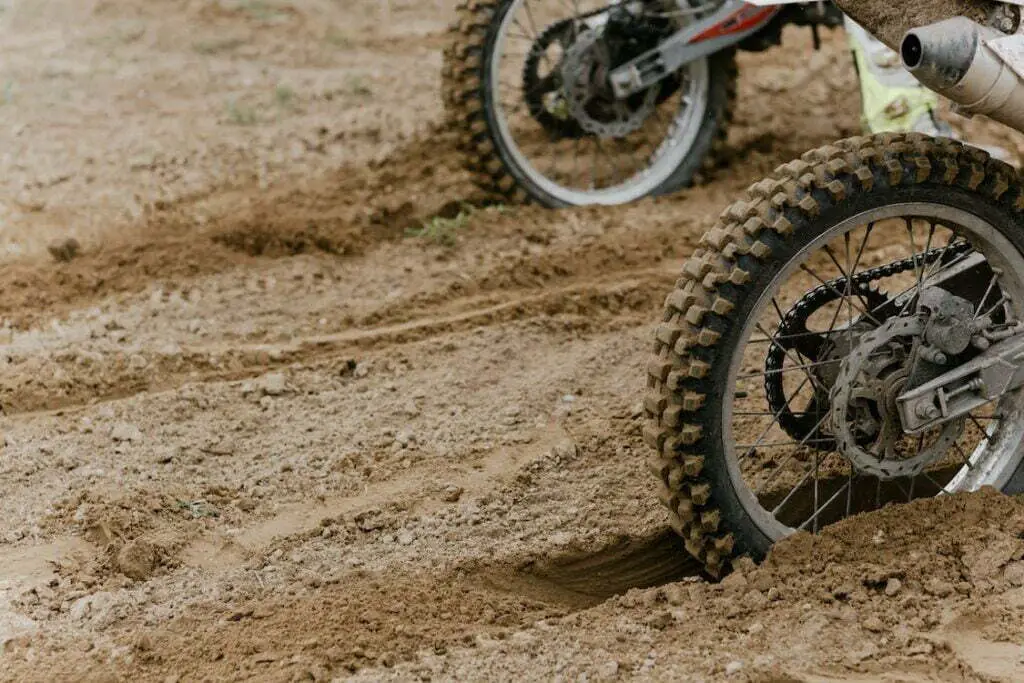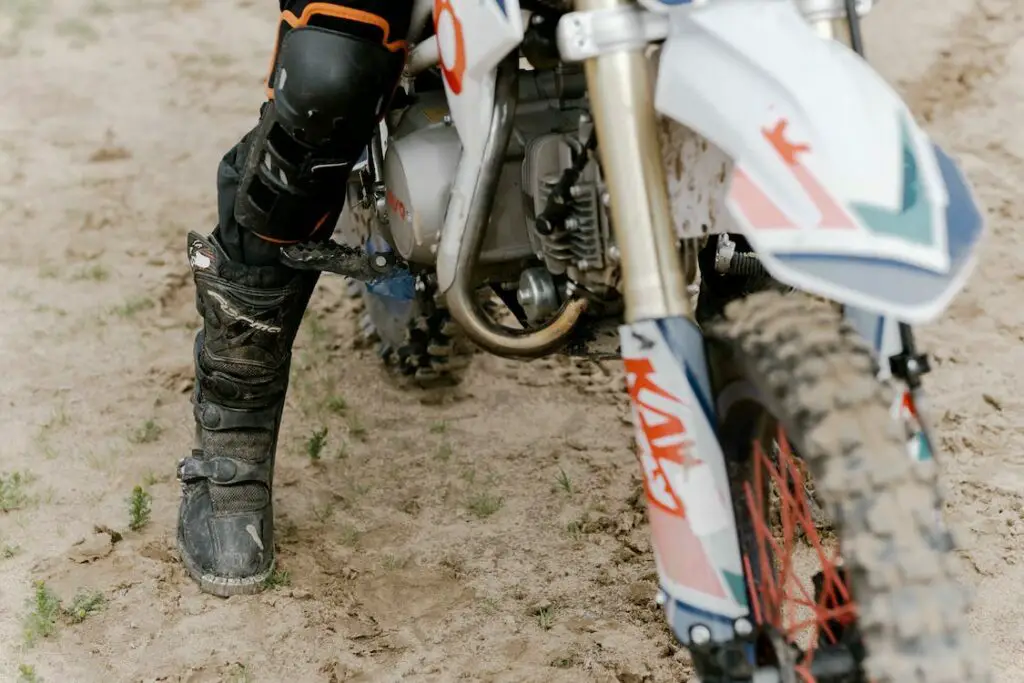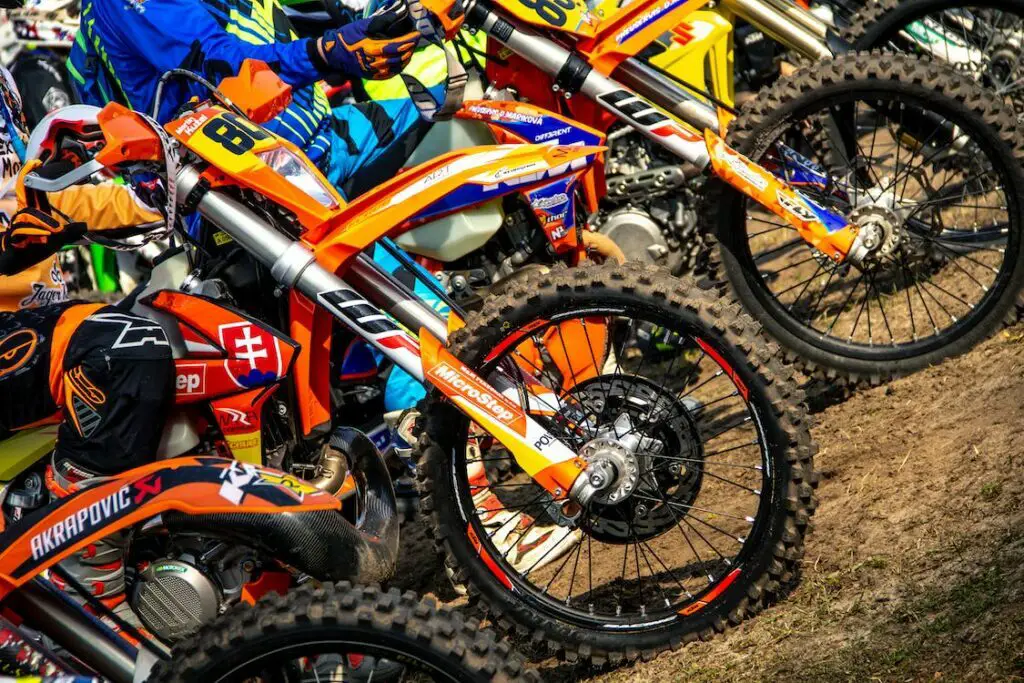A friend of mine has recently bought a new rear dirt bike tire and had it fitted at the shop. After one ride he noticed that the directional arrow on the tire was facing the wrong way. He asked me if it made any difference, so I dug into the research and found some interesting facts.
Most soft terrain dirt bike tires are directional, featuring a scoop or V-shape knob pattern which provides best grip on mud and sand. Medium and hard terrain dirt bike tires are usually non directional, featuring a uniform knob pattern which ensures best traction on compacted and rocky tracks.
Why Are Some Motorcycle Tires Directional
Let’s put our engineering hat on for a second and briefly discuss motorcycle tires and what they are made of.
There are two types of tires – and bias ply and radial ply.
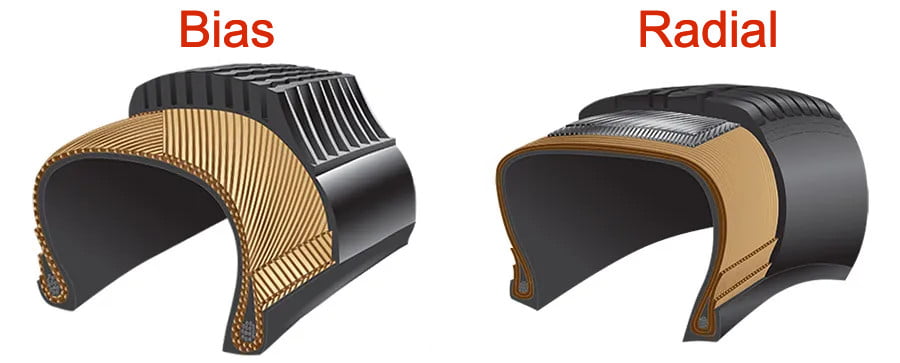
Image courtesy of www.cokertire.com
Bias Ply Tires
“Multiple thin nylon or Kevlar cords band across the tire at an angle between 35-40 degrees. As one strand lays across the tire, the next is applied in the opposite direction to create a crisscross pattern.” says the official Dunlop website.
These tires are tough – the additional sidewall strength and stiffer carcass offer great puncture protection and allow for heavier loads.
However, they have a greater chance of overheating when being used at high speeds for a long period of time.
Dirt bike tires are mostly bias ply due to their increased durability and lower speeds compared to road racing motorcycles.
Generally speaking, most bias ply tires are directional because the plies are overlaid in a specific pattern that is designed to put no separation stress on ply junctures.
Theoretically, when run in the wrong direction, there is a chance of ply separation due to excessive amounts of separation stress applied to the junctures, resulting in almost instant tire destruction.
The general consensus of dirt bike enthusiasts is that at the lower speeds of motocross and recreational off-roading this has virtually no chance of happening.
Radial Ply Tires
In the early 1980’s the radial tire technology was introduced that revolutionized the world of motorsport.
“Using steel cords or belts laid perpendicular to the tire, it was possible for the first time to give the tread and sidewall independent properties.” says the official Dunlop website.
With the separation of crown (top part) and shoulder (side part) the manufactures could now give these parts different properties.
This breakthrough has resulted in tires that could be used at very high speeds for longer, while running cooler and providing better wet weather grip than their predecessor.
Radial ply tires are lighter but not as tough and therefore more susceptible to punctures.
Although radial ply tires are mainly used for high speed road motorbikes, it is worth mentioning that most of them are directional because the water grooves are designed to only work in one direction.
How To Tell If Your Tire Is Directional
Wondering whether your tires are directional or not? It’s actually very easy to check.
Check For Directional Arrow
If the tire is directional it will have an arrow like this stamped on the side.
The arrow is pointing in the direction of rotation, e.g. towards the front of the bike.
If you have had a good look and you can’t find the arrow, your tire is non-directional and can be mounted in either direction.
Here is an example of what these directional arrows can look like.
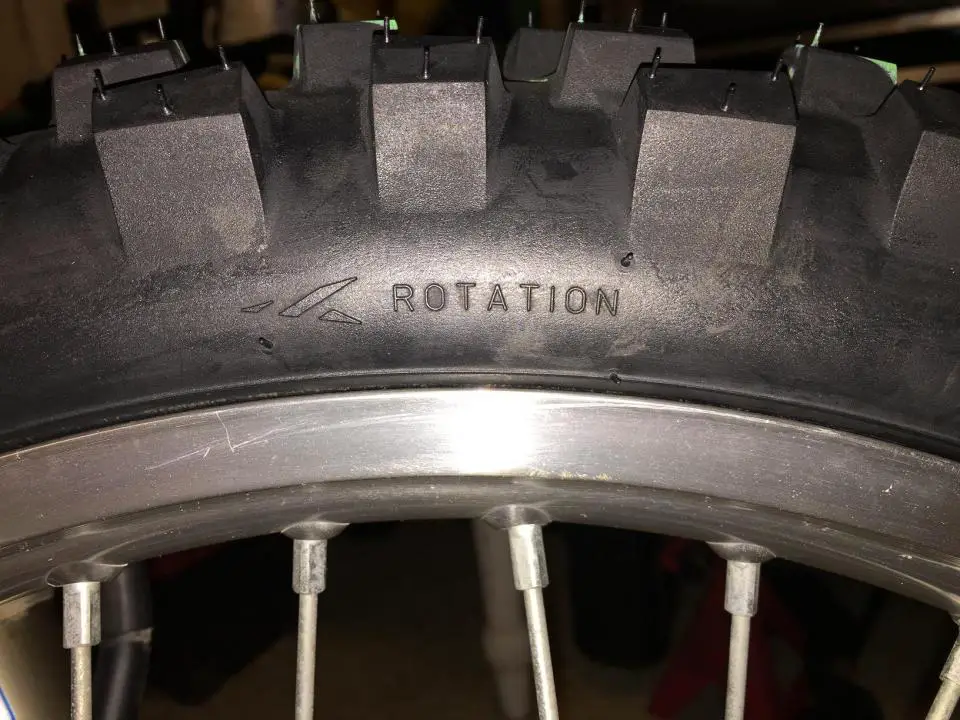
Image courtesy of www.thumpertalk.com
Check Knob Pattern
Another easy way to tell if the tire is directional or not is to simply check the knob pattern.
Most soft terrain tires feature a cup-like or V-shape knob pattern that is designed to scoop loose material (mud and sand) and give the best traction in these conditions.
Here’s a good example of a Kenda K782 tire for sandy tracks – the knobs form scoops at regular intervals and will give the best performance in only one direction.
Now let’s compare the tread pattern to a hard terrain tire, like the Michelin Starcross 5.
The knobs are evenly distributed around the tire and are positioned in a uniform pattern to provide the best contact surface area with rocky and well compacted tracks.
This tread pattern will perform well in any direction.
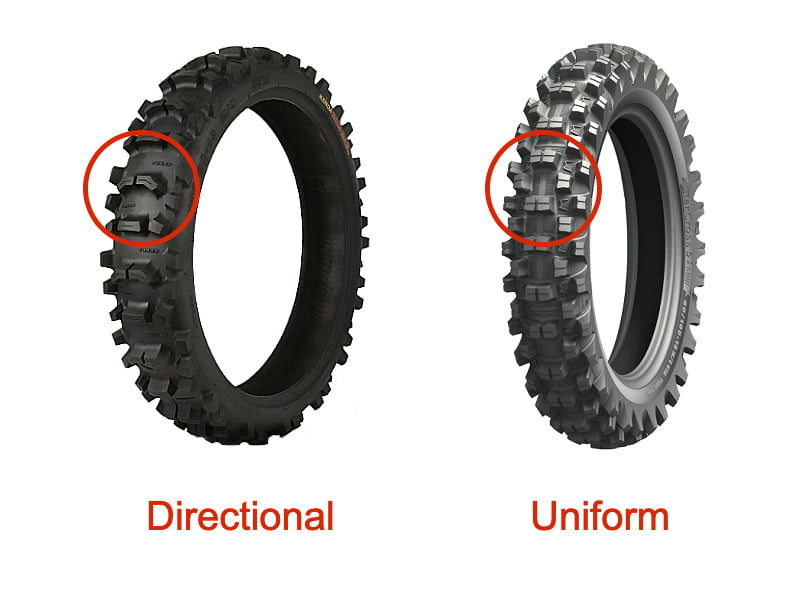
Image courtesy of www.motozone.co.nz
Can You Flip Directional Dirt Bike Tires
You may have heard from your bike buddies about flipping the tires (taking the tire off and putting it back on in the reverse direction) and were wondering if you should do it as well.
Because the wheels rotate in one direction when you accelerate, only one side of the tire knobs experiences friction against track material (mud, sand, dirt, pebbles).
This is true for the other side of the knobs during braking, but there’s a lot less braking than accelerating when you ride, one would hope.
Dirt bike riders, pros and weekend warriors alike, sometimes flip their front and rear tires when they wear to a certain extent.
Flipping exposes the “sharper”, less worn side of the tread knobs to the track and improves the grip during acceleration.
Another trick people use is sharpening the tire knobs by slicing off the rounded edge with a razor blade or a tool like Knobby Knife.
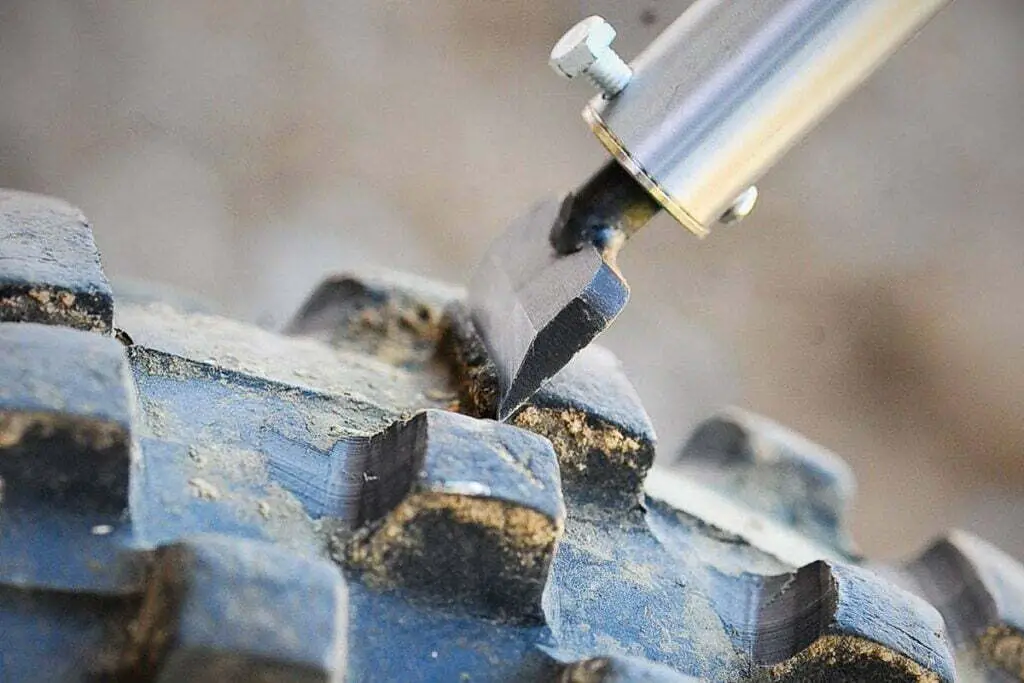
Image courtesy of www.knobbyknife.at
This way you can get more bang for your buck out of one tire before you need to replace it with a brand new.
Of course, flipping is usually done by recreational and practice riding, as a proper race will push the bike to the limit and require the full performance of brand new tires.
So, can you do it too?
If your tires are non-directional, then in most cases you can.
If your tires are directional (judging by the knob pattern), then flipping the tire may result in poor performance.
Some riders have reported that a directional rear tire put on backwards is only 80% as good when it comes to traction and slides around as a result.
Personally, I used to wear directional tires out to about 70% and then list them on the local online marketplace as “used tires that still have a few rides left in them” to use the sale money towards a new tire.
Summary
The majority of dirt bike tires are bias ply type, which offer better durability and are less prone to punctures.
Bias ply tires are usually directional due to their inner structure, however this plays a larger role when the tire is used at high speeds at prolonged periods of time.
Because recreational riding doesn’t involve either, casual riders pay closer attention to the tread knob pattern when it comes to determining tire direction.
Most weekend warriors seem to flip their tires when worn, not paying much attention to the directional arrows to get more bang for their buck, whereas some never flip directional tires.

